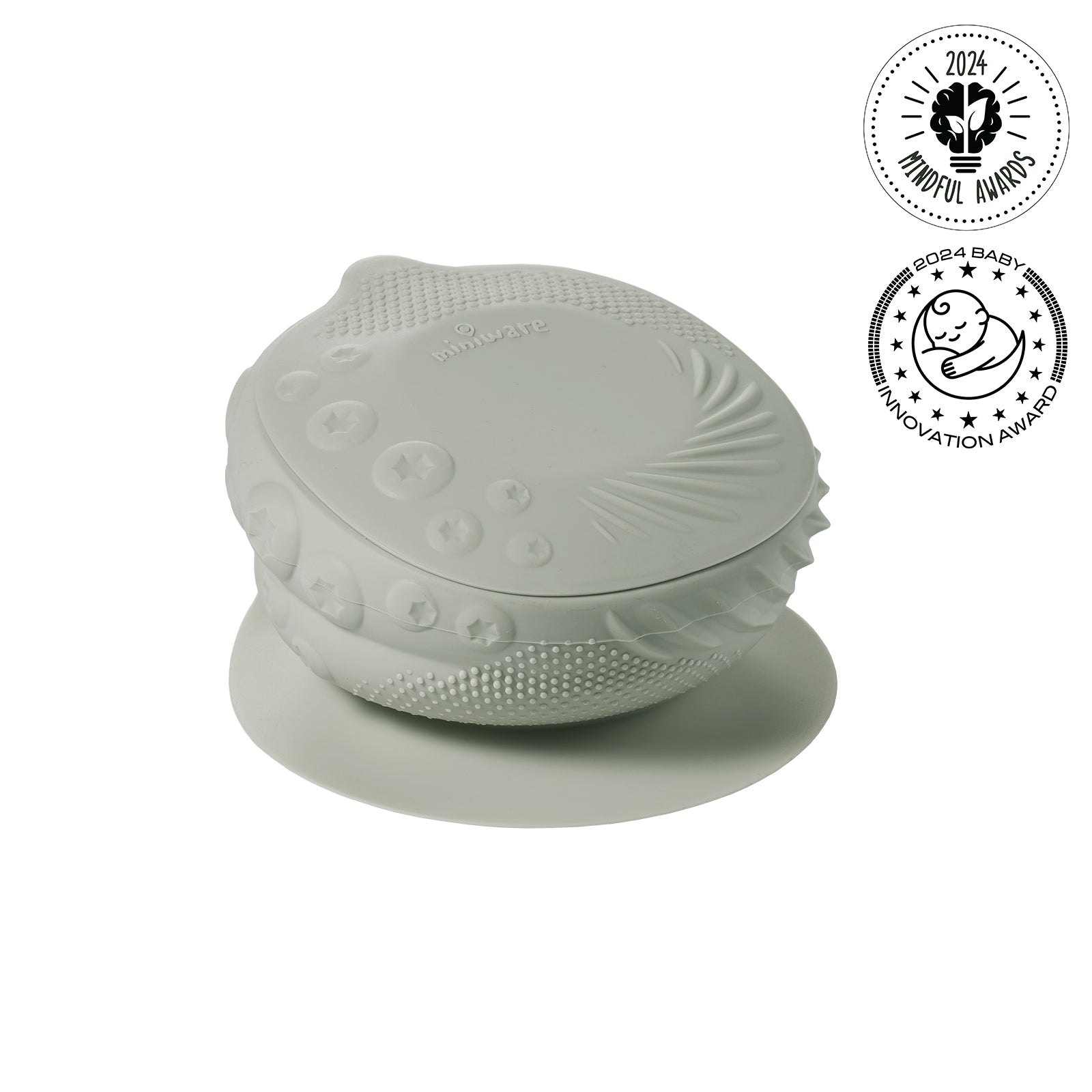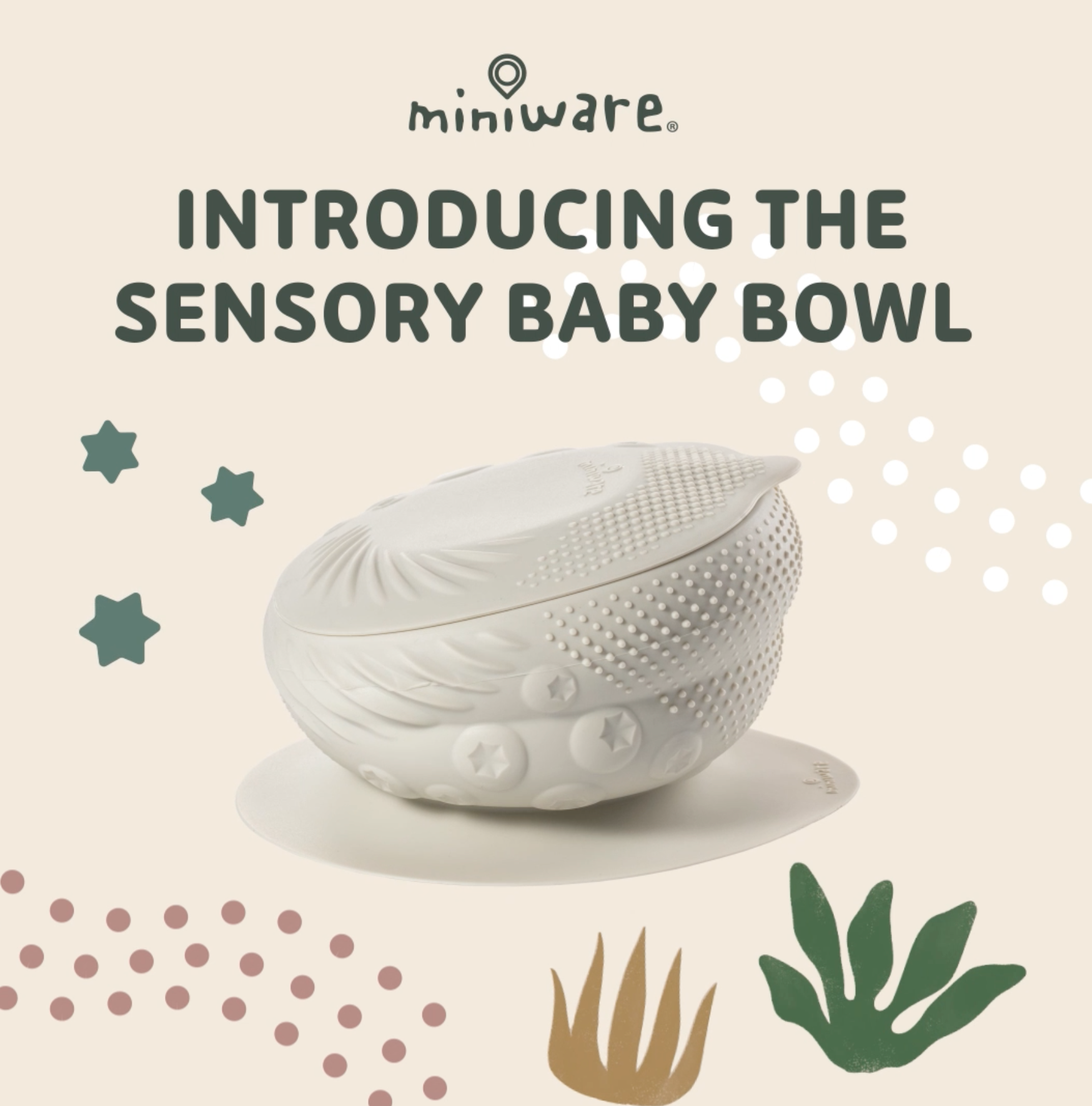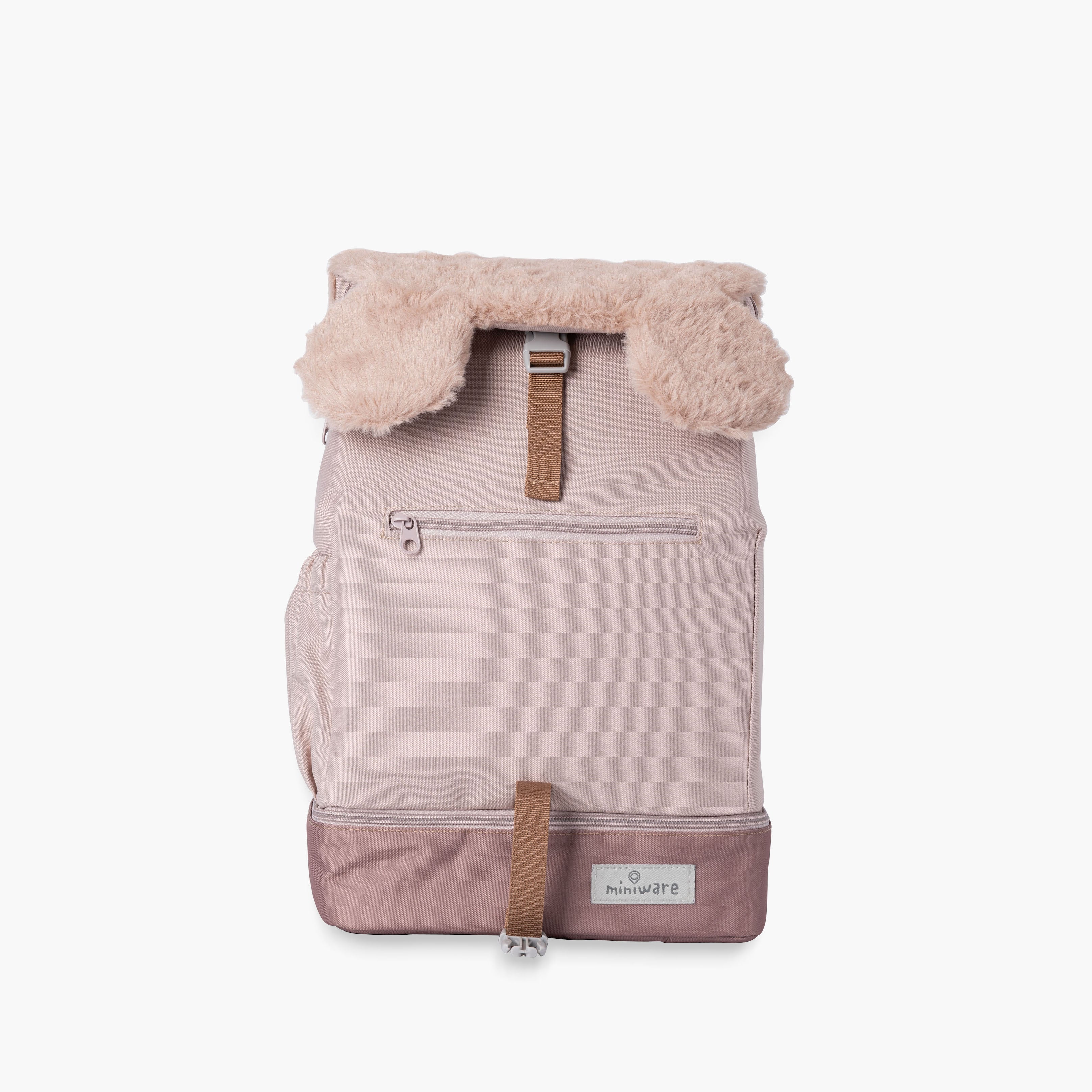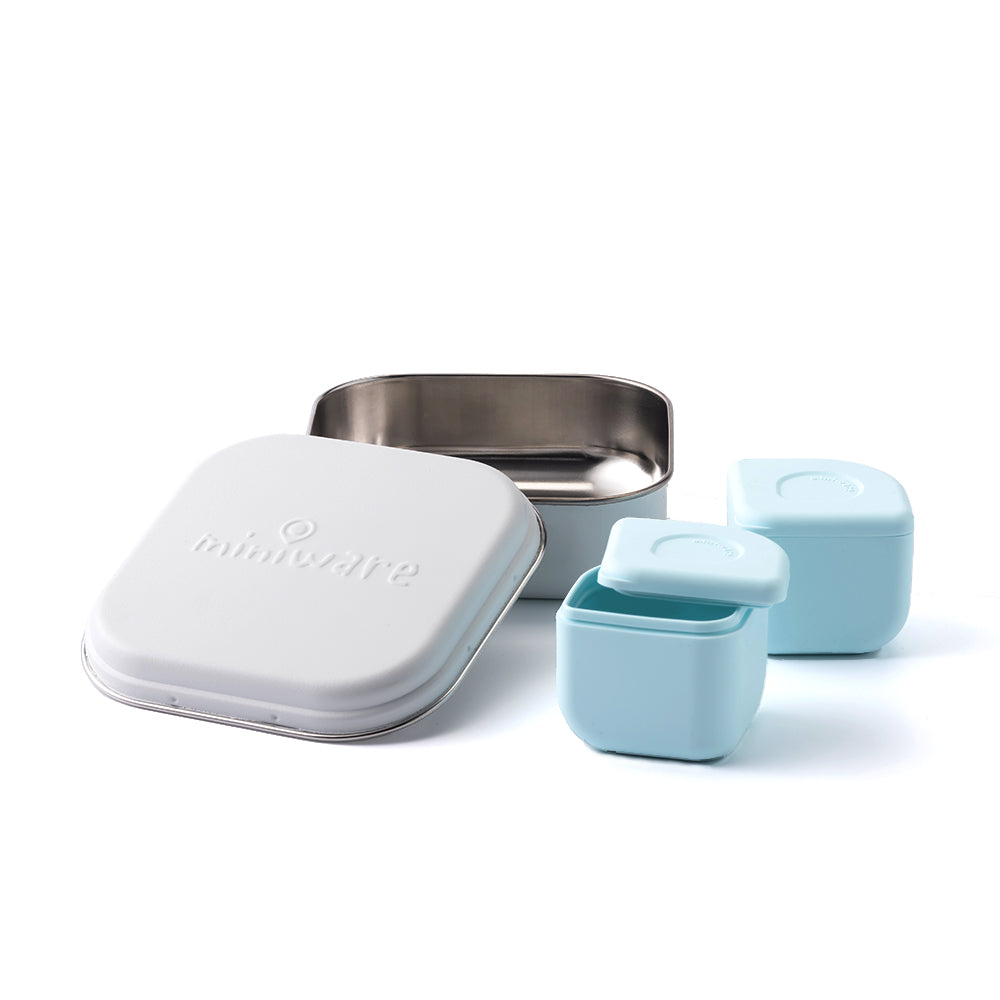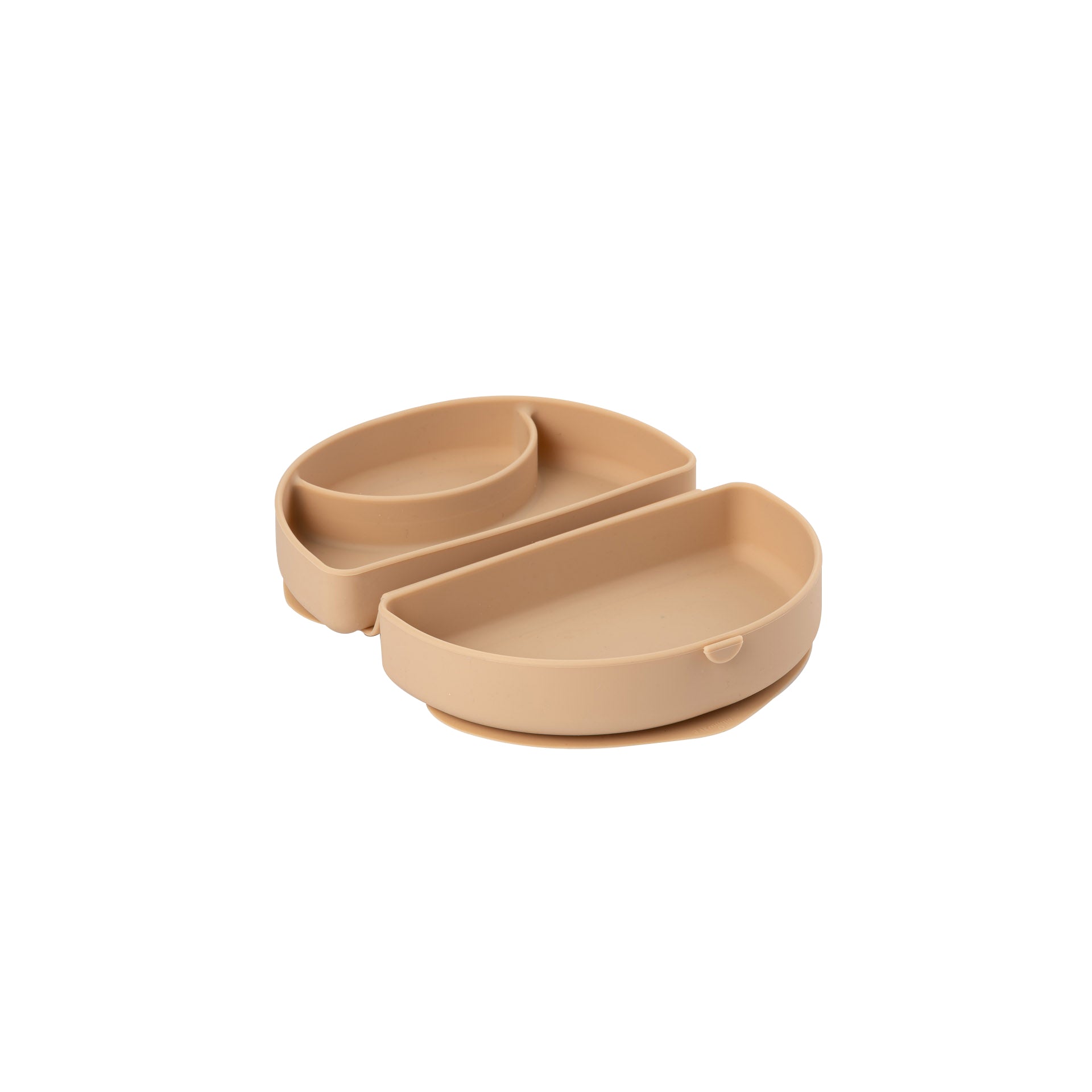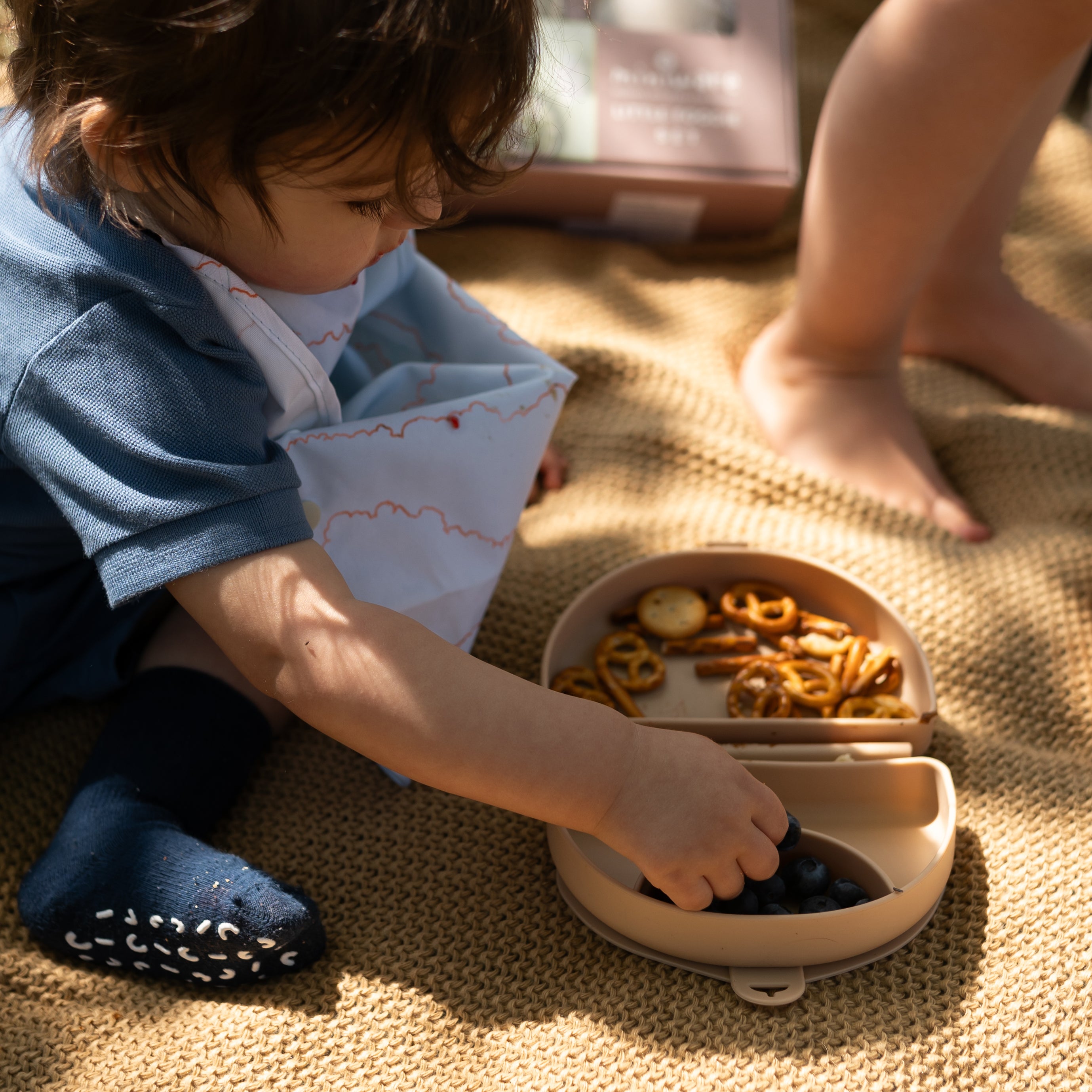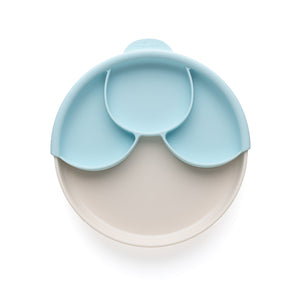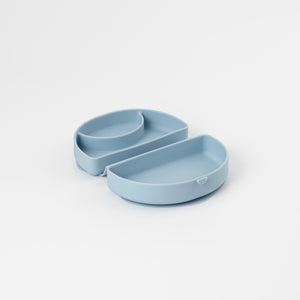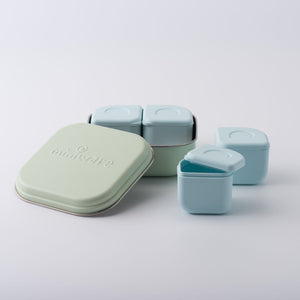Feeding time for babies between the ages of 0 and 4-6 months is a fairly straightforward process, nutritious meals of breastmilk or formula throughout the day. But once your infant begins to lose interest in their liquid diet and starts reaching and fussing for food adults and siblings are eating, it’s a whole different story! It’s important not to rush the eating milestone of introducing solid foods as babies’ digestive systems mature at different paces and starting too early could play a part in allergy development. Paying close attention to your little one should give you clues as to when they’re ready to start with puree food for babies.
Typically, most babies are ready to begin solid foods between the ages of 4 and 6 months, but this may not apply to everyone. In addition to showing a strong interest in new foods, your infant should be able to hold his/her head up and sit upright with minimal support. Once they begin staring at your food, waving their arms, and/or making vocalizations while you eat, it’s a good sign they’re ready for some new food experiences.
Parent tip: If your baby is struggling to sleep through the night after the age of 4 months, it may be because they’re hungry. One thing worth a try is to add some rice cereal to the baby’s diet [added to breastmilk or formula milk] and see if the thicker milk helps the baby sleep longer.
Making the Move to Solid Foods
A good starter food for most infants is rice cereal. It’s fortified with important nutrients and children are rarely allergic to it. It can be thinned down with breast milk or formula to make a thin gruel. In addition to introducing new foods to your child, this is also the start of a whole new learning process for them.
It’s especially important that feeding time is relaxed and peaceful, your baby is well-rested, and you have the time and energy to devote to the somewhat slow and occasionally frustrating task of feeding an infant. Offer your baby several small bites with a soft, silicone spoon. It’s best to start with very short sessions and stop when your baby turns her/his head away or intentionally spits the cereal out rather than drooling it down their chin. Respect when your baby has had enough. You can always try again later.
Timeline Tip
You never want to make a full transition to solid or puree foods in a day or even a week. Your baby will still need breastmilk or formula to meet most of their nutritional requirements until they are gradually weaned to only solid foods. As your baby gets used to eating rice cereal, you can begin thickening it up for a more solid texture. It’s exciting to watch your baby explore a whole new world of foods, but don’t move too fast. After rice cereal, you can introduce other types of cereal such as oat, barley or wheat. To help pinpoint food allergies, it’s important to only introduce one new food at a time and wait until you’re sure your baby isn’t showing any allergy symptoms (gas, diarrhea, cramping, rash, hives, breathing difficulty, vomiting). If they do, remove the food from their diet completely and wait until your baby improves to try something different.
From Cereal To Puree and Beyond!
Once your infant is comfortable with a variety of cereals, you can begin introducing pureed fruits and vegetables. It doesn’t matter what you start with, try an unseasoned version of something your family will be eating too. Just make sure to wait and see how your baby adjusts to the new food before introducing another. Be patient, soon your baby will be able to enjoy the array of fresh, seasonal fruits and veg, just like everyone else!
Most babies will stay on pureed foods until they’re 8 to 10 months or so when they develop the grasping skills to begin finger foods. While jarred baby food may be convenient, there’s no need to make special or separate meals for baby if you don’t want to. Simply remove a portion before any seasonings are added and set it aside. Babies haven’t developed the taste for salt, added sugar or rich butter, so there’s no need to start them now! These additions and many others could also lead to upset tummies.
Food Safety for Babies
It pays to take extra precautions when dealing with delicate, growing bodies and immune systems.
- Toss baby food that has been open for more than 48 hours.
- Securely store baby food purees in sealed containers. Miniware Silipods are airtight, the perfect size for purees and can conveniently go from fridge or freezer to the microwave.
- Always stir warmed baby food and ensure the temperature is warm, not hot before serving.
- Don’t feed your baby directly from a large storage container or jar that you plan to save remaining food in. Bacteria from the baby’s mouth can contaminate leftovers. Instead use small, single serving containers like our Silipods!
- Avoid choking hazards like nuts, seeds, hot dogs, popcorn, raisins and hard candies for the first year.
- Foods with high allergy risk should be introduced last or avoided. This includes cow’s milk, shellfish, strawberries and nuts/nut butters.
With time and patience, mealtimes will become easier and instead of a battle to keep cereal in their mouths, you can share in the joy of your baby’s new food discoveries.
